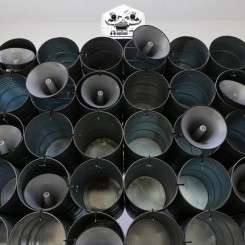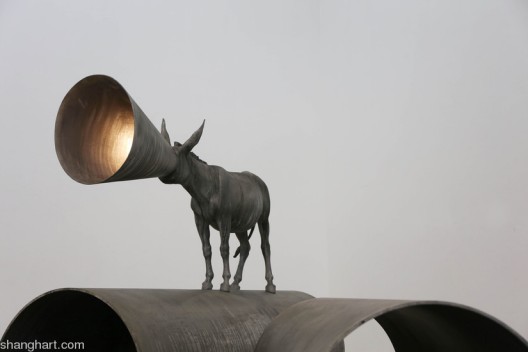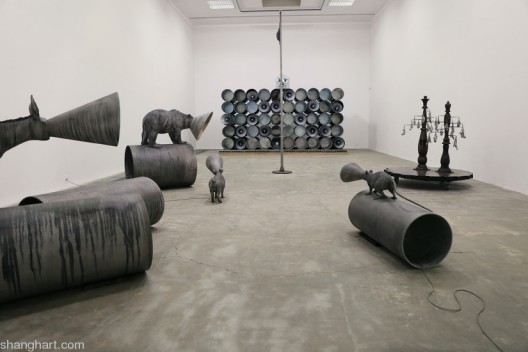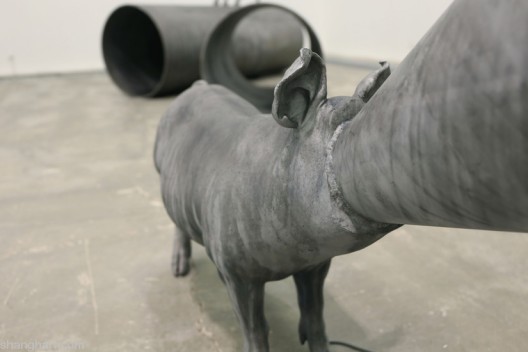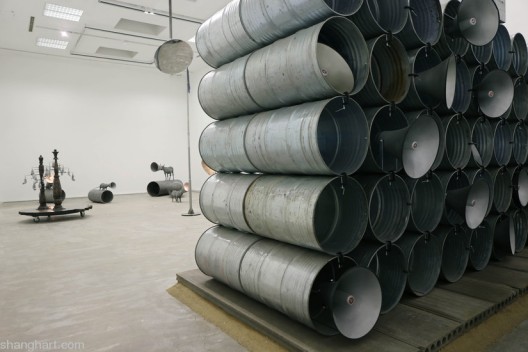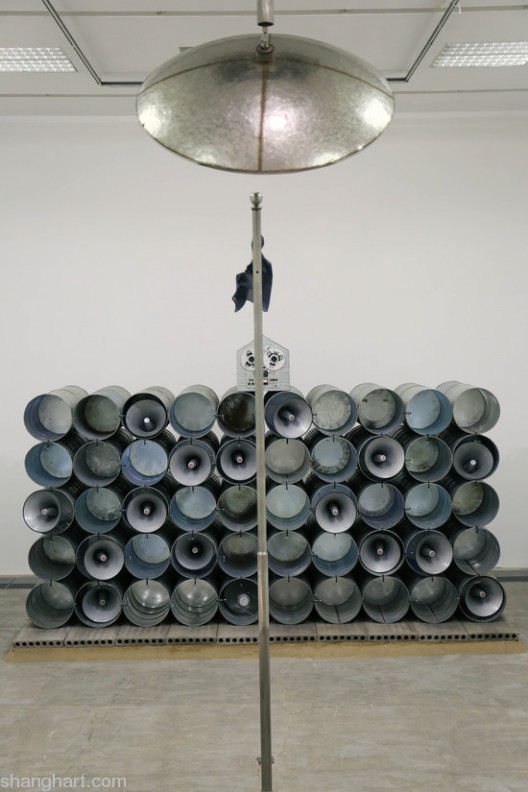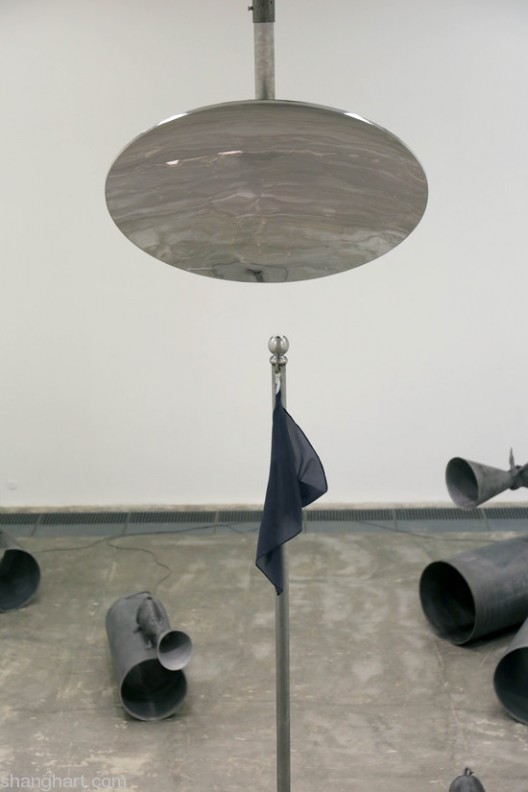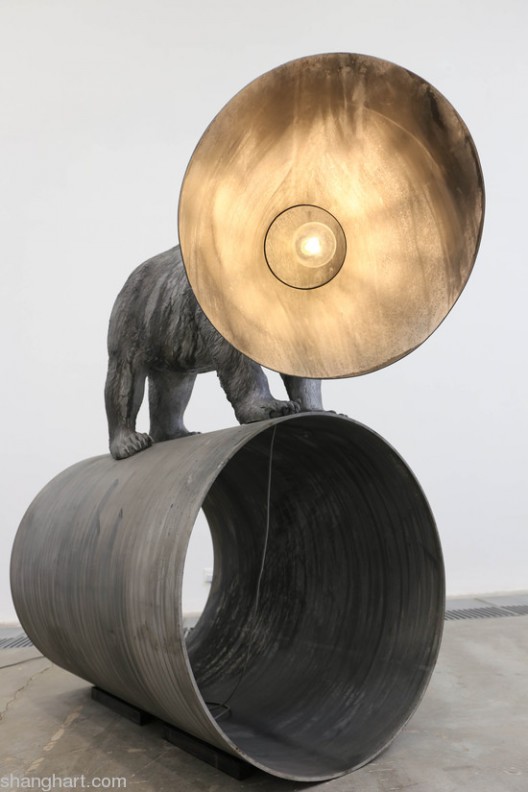“Echo” – Lu Lei solo exhibition
ShanghArt Beijing (261 Cao Chang Di, Old Airport Road,Chaoyang District, Beijing,100015), Sep 13 – Oct 11, 2015
It’s not a zoo—it is an animal farm at ShanghArt Beijing right now. Common creatures rather than exotic animals play the lead role in this theatrical installation: a dog, a rat, a donkey, a pig and a bear…They have all lost their senses. No sight, smell, touch or taste enriches their lives anymore. Relegated to just hearing, they have few options with which to form their own view of the world; they are utterly dependent on others.
Cast in dull gray aluminum, all these animals sport a cone-shaped protective collar of the kind prescribed by vets following surgery exactly where their snouts are supposed to be. From within this bullhorn, an old-fashioned light bulb silently transmits one short and simple message per animal in Morse code: No memory, no smell, no conscious, no sight and no words. They are stuck.
Each of them was once an important element in China’s age-old history. These animals proudly roam through stories which people in China have told each other for thousands of years; some even ruled the Chinese cosmos for millennia. Now they are just a dour bunch inhabiting this dystopian community. With no place in particular to go, they live next to a terrain called the “public square”, which consists of a flag pole complete with a gray flag and, on the opposite side, a massive structure comprised of 100 oil barrels conjoined to form a huge wall. From within the wall, an array of megaphones do not blare propaganda, but emit pigeon coos. This makes for another noisy gray zone which is otherwise empty but for the occasional visitor to the show.
Only the flag moves. From time to time it flies in a slightly hectic fashion, quickly and nervously. Surprising, to say the least. At first, no source of wind is to be found—mind you, this is an indoor exhibition. The first contender as a source of current is a parabolic mirror suspended from the ceiling and slanted at an angle so that it captures the flag in its focal point. But there is no light coming from this direction, nor is the wind blowing at the flag, which should therefore just dangle limply from its pole. Yet it keeps jerking towards the direction of the oil-barreled wall. It is from within the flag pole itself—from a slit, to be precise—that the current originates and makes the gray cloth quiver uncomfortably. From inside the pole in a “public square”, a flag is made to fly. Just savor this metaphor for the moment. At the gallery, nobody wants to talk about analogous places in the city proper, of course.
The gray zone, which is what the exhibition evokes, engulfs all and eventually creeps up in the viewer’s consciousness as well. The gray zone is a place where sight is impaired. Between day and night, all sorts of things could happen. There are no rules that apply; it is all “gray” noise. In short, it is a difficult place to navigate.
Then “Night” falls. The king and his queen stand tall on a “golden spiral”. The shapes taken from an international chess game and fabricated from wood more than a century old—the two structures are of roughly human scale and are positioned on a wooden base that refers to a compositional method based on the golden ratio, a particularly rewarding aesthetic solution, supposedly. Why this installation bears its title is only revealed by its inhabitants. A camp of bats—again cast in gray aluminum—readies itself to fly. Not by sight but by sound they navigate the dark. Sensing echoes of their own “cries” they successfully venture out into the world, not only giving the exhibition its name, but indicating that, artistically speaking, nothing is to be gained from public spaces that generate their own raison d’être and are otherwise devoid of life, nor from a society of sense-deprived creatures that is left to document their own inadequacy. Life—for this artist—appears to be a fly-by-night operation.
